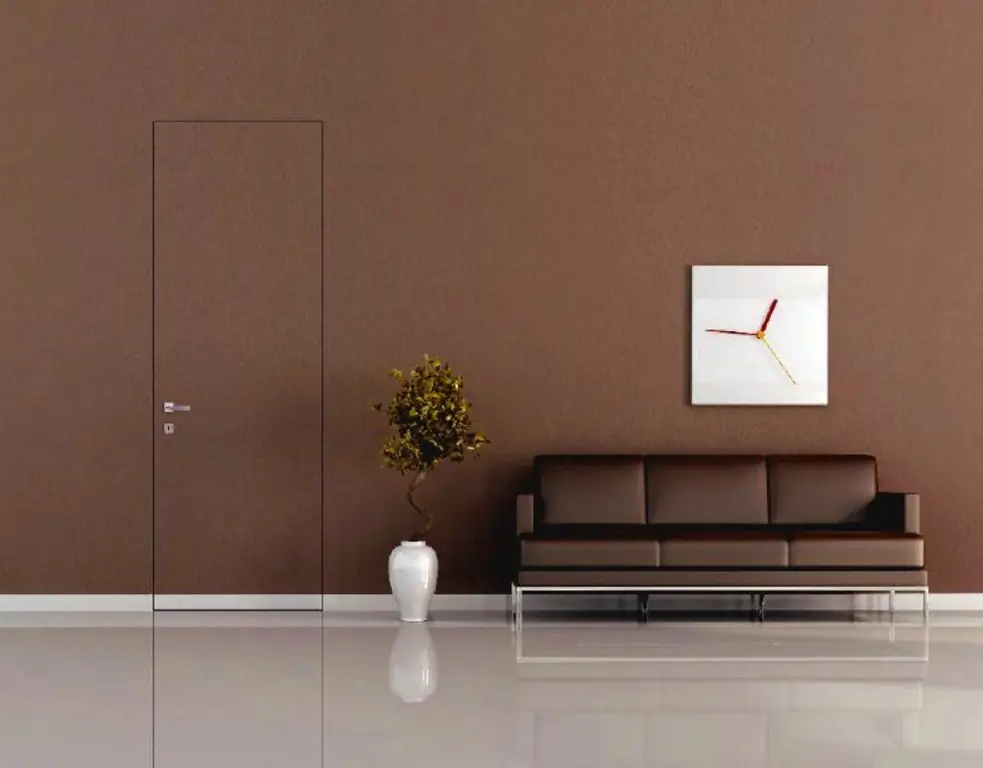
Table of contents:
- Author Bailey Albertson [email protected].
- Public 2024-01-17 22:26.
- Last modified 2025-06-01 07:32.
Hidden doors their application in the interior: everything will become apparent

Invisible doors happen not only in spy TV shows, tombs of pharaohs and ancient castles. The current "invisible" door does not lock secret rooms, but works for "peaceful" purposes. It is used to create a harmonious space in a home, apartment or office. If you need to "smooth out" or "stretch" the wall up, if unnecessary details tire your eyes or violate a single picture of the interior, in such cases Doors Invisible is installed, otherwise referred to as a "hidden door".
Content
-
1 What is a hidden door
1.1 Video: production of hidden doors
-
2 Varieties of hidden doors
- 2.1 Doors for painting
- 2.2 Invisible door under the wallpaper
- 2.3 Disguise as a panel
- 2.4 Doors under the panels
- 2.5 Tall doors
-
3 Features of installation and operation of hidden doors
- 3.1 Video: design and installation of doors with a magnetic lock and hidden hinges
- 3.2 Care for hidden doors
- 3.3 Repair of hidden doors
-
4 Hidden doors in the interior
- 4.1 Photo gallery: hidden doors as a solution
-
4.2 Video: How to Install Doors Invisible
4.2.1 Consumer feedback
What is a hidden door
For all the mysteriousness of the wording, "hidden door" is not a technical term, but rather an accurate marketing ploy. Well, however, it reflects the essence of the product, which is an ordinary door, but with an unusual frame. The specificity lies in the device of the door frame, which is designed to install the door leaf in the same plane with the wall. Platbands are absent and, if desired, the doorway can be completely "masked", giving the canvas the same color and texture as the wall.
Technically, this is achieved using an aluminum frame, which must be matched to the thickness of the partition, with specially designed built-in hinges.

Multi-chamber aluminum profile increases door noise insulation
The hinge mechanism consists of two steel leaf springs that rotate around a reference axis. One plate is connected to the end of the door leaf, the other is fixed to the frame. Friction is reduced by means of special anti-friction bushings.

The size and color of the hinges is selected depending on the dimensions and material of the door
The design of the hinges was developed for metal entrance doors, and therefore its main advantage is high burglar resistance
The hinges are placed in a deep niche of the door frame; it is simply impossible to reach them when the doors are closed. The intruder will have to, at a minimum, disassemble the wall before access to the door suspension opens. In addition, the aesthetics of the doorway increase - the absence of overhead hinges contributes to the embodiment of design ideas.
But this type of suspension also has disadvantages:
- the door opening angle decreases;
- high price of the part;
- difficult assembly and disassembly of the door for possible repair.
For the reasons listed above, self-installation of such doors is very difficult. You need special milling equipment to make technological holes for attachments. A deviation by literally a few millimeters threatens a significant reduction in the service life of the door. In addition, after installation, it is necessary to correctly adjust the hinges, otherwise the normal functioning of the doors will be a big question.
Video: production of hidden doors
Varieties of hidden doors
Doors with hidden hinges are classified in two ways.
-
By the presence of finishing on the canvas:
- one-sided - "invisible" only on one side, the opposite surface of the canvas is decorated like an ordinary door;
- double-sided - "hidden" on both sides of the canvas.
-
By opening method:
- swing doors - opening occurs by pressing on one side of the canvas (the most common type of doors);
- pendulum - opening in both directions (like doors at metro stations);
-
revolving doors (roto) - the axis of rotation of the door leaf is located in the center of the doorway;

Revolving door The door rotates around an axis located in the center of the sash
- sliding - cassette type, when the canvas "goes" into the cavity, arranged in the thickness of the wall.
As practice has shown, one-sided hidden doors with a swing type of opening are in the greatest demand. The fact is that the standard thickness of such a door is small - the door frame is up to 75 mm, the leaf is up to 35 mm. This is enough to firmly anchor the aluminum frame in the opening. In the event that it is necessary to hide the door on both sides, the thickness of the box must correspond to the thickness of the load-bearing wall, and this is an additional cost and a corresponding price tag (besides, the invisible door itself is not a cheap pleasure).

Hidden doors compensate for the layout flaws - two doors next to each other
As for the methods of opening the door, the situation is as follows. Hinged doors with hidden hinges come first. They are most often purchased in the standard configuration. A swing door is more expensive, but the quality, the level of comfort is much higher. Roto door, due to its technological complexity, ranks last in terms of financial affordability. Sliding doors cannot be called "invisible" in full - small, but clearly visible niches remain on both sides of the partition. In addition, the installation of a cassette door is associated with a difficult preparation of the wall itself - it is necessary to prepare a cavity in it for rolling back the door leaf.
Invisible doors, with the general name "for finishing", are classified according to the type of coating that is supposed to decorate it. The manufacturers offer various options for hidden doors. Among them there are products that represent a finished product (the canvas is covered with paint, laminated film or veneer). As well as doors designed for self-decoration.
The door on its own cannot become invisible, in this it is "helped" by design techniques, which, for all their simplicity, require a professional approach
Paintable doors
One of the simplest ways to disguise doors. The canvas is painted with the same dye as the adjacent wall. Only small (2-3mm) gaps around the door perimeter will indicate the presence of a doorway. But, if you apply a non-standard coloring, the effect can be minimized. For example, by creating a painting of a natural landscape or modern graffiti.

Artistic painting conceals the "presence" of doors
Invisible door under the wallpaper
Wallpaper can enhance the effect of hidden doors by selecting the relief and pattern. For example, striped wallpaper with vertical lines almost completely hides the vertical gaps of the doors. If, when opening, the door leaf goes inside the wall, a wide picture is placed above the upper slot, which closes the gap.

Wallpaper with vertical stripes hides the door
Disguise as a panel
A way that requires imagination and artistic taste. It consists in the fact that several panels of photo wallpaper are placed on the wall. A frame is mounted on the wall (you can use polyurethane skirting boards or embossed cardboard), inside which graphic wallpapers are glued. Few people would think that a door is hidden behind one of the panels. At least until it opens.

Veneer decoration of the door and part of the wall of the room for a hidden door
Doors under the panels
It is no exaggeration to say that a door disguised as panels is an ideal solution to the problem. But you need to remember that you will have to cover the entire wall (or at least the part adjacent to the doors) with similar panels. A correctly sized rectangular cladding will completely hide the "presence" of the doorway. If at the same time install the roto door and get rid of the door handle, the effect will be maximized.

The door, hidden under the mirror surface, does not attract attention
High doors
In addition to the above tricks, there is another way to trick your eyesight. This is a full-height door. The top and bottom gaps are aligned with the floor and ceiling lines and are thus out of sight. This destroys the stereotype of the perception of the doorway. Such doors are piece goods, made to order, taking into account the size of a particular room and are much more expensive. However, it's worth it. If the door really needs to be hidden, several techniques are used at the same time.

Dedicated tall doors with an inner frame increase the volume of the room
Features of installation and operation of hidden doors
If the door is installed independently, you need to carefully study the installation instructions from the manufacturer. Usually, it describes in detail the equipment of the product and the assembly procedure. Here we will give general requirements, but it should be borne in mind that each model has its own characteristics.
At the preparatory stage, it is necessary to completely form the doorway (without finishing work). The sides are brought out in a strictly vertical position, the permissible error is 2 mm. by 2 m. Since the floor is still rough at this stage, the location of the finished floor level is determined. And the position of the frame is tied to this mark.

High-quality preparation of the doorway is a prerequisite for the correct installation of doors
The installation of a hidden door is done in three steps.
-
The door frame is mounted. The assembly is carried out on a flat surface, the aluminum parts are removed from the factory packaging and connected in accordance with the drawings. The kit includes all the necessary hardware - screw screws, brackets, etc. The assembled frame is installed in the doorway and fixed with ready-made holes in the aluminum profiles. The orientation should be strictly vertical. If necessary, use wooden or plastic wedges to give the box a stable position. To control the quality of the installation, measurements are taken between the side posts in the upper and lower parts of the frame (the distance should be equal to the width of the door leaf plus 5 mm). The top bar of the frame should be parallel to the floor. The rubber seal is applied last.

Hidden door installation Invisible door in section, options for the structure of the door leaf
-
Finishing work is in progress. In order for the finish coating of the wall to serve for a long time and without cracking, the following rules are recommended:
- the junction of the door frame with the wall must be glued with a masking net;
- before applying the plaster, the wall is covered with a primer such as "Betonkontakt" - this creates good adhesion for the future coating;
- work is carried out at a positive temperature and a relative humidity of no more than 60%;
- a thin layer (1-2 mm) of fine dispersion leveling putty is applied over the plaster.
-
The door leaf is hung and the fittings are installed. The hinges are attached to the sash. Adjustment of the position of the web is carried out, while the width of the vertical gaps should be the same. The counterpart of the locking mechanism is installed in the door frame, and the door handle and lock are installed in the leaf.

Installing a door lock The lock is fixed with two screws at the end of the door leaf
Video: design and installation of doors with a magnetic lock and hidden hinges
Caring for hidden doors
Invisible doors are made of the same material as a regular door. Hence, caring for them is not significantly different. The cleaning procedure is to remove dust and dirt from the surface of the canvas and frame.

Do not use rough cloth or strong liquids
The door is washed with standard cleaning agents. To do this, use a soft cloth soaked in an aqueous solution. The surface is treated first with a damp cloth, then wiped dry.
Not recommended:
- prolonged contact of the product with water during cleaning;
- use of scrapers, rigid metal and plastic rods;
- the use of cleaning agents that contain abrasive substances;
- the use of strong acids, alkalis, solvents based on acetone and methanol, as well as gasoline, kerosene, etc.
Repair of hidden doors
It should be noted that hidden doors are high quality products. The aluminum profile used for the frame is not subject to corrosion and deformation. Problems are possible only with rubbing parts of the doors - hinges and locks.
If the door begins to emit sounds, creak or play appears, it is better to call a specialist for prevention. As a temporary measure, self-lubrication of the door hinges with machine oil is allowed. Suitable lubricants for household use, type WD-40. If oil drips appear on the surface of the box or canvas, they must be removed immediately with a clean napkin or cloth.

Lubricant is sold in an aerosol can
The displacement of the canvas and the change in the size of the gaps is an alarm bell. This indicates a malfunction of the door hinges. Perhaps the reason lies in a violation of the regulation. In this case, you need to get the instructions for assembling the suspension devices, and correct the position of the sash. If this is not done on time, you will have to change not only the hinges, but also the canvas. The adjustment key is supplied in a set of hinges, and is a hexagonal metal spoke curved with the letter G.

Example for adjusting the inner hinges with a hex key
Sometimes the locking device, consisting of a mortise lock and a door handle, fails. The lock also needs to be lubricated (at least once a year or as needed). A falling latch tongue indicates that the ejection spring has worked. The lock must be removed from the sash and disassembled. The body consists of two parts, fastened with screws. For dismantling, you need a Phillips screwdriver or a furniture screwdriver with a low rotation speed.

Using an electric screwdriver significantly speeds up repairs
The spring is located directly under the casing, so you need to open it carefully - it can fly out and get lost. As a rule, locks are equipped with steel leaf springs, which cannot be repaired, but simply replaced.

It looks like a disassembled lock with a coil spring
In case of mechanical damage to the canvas - cracks or scratches, restoration is carried out using wax or acrylic putties. The desired shade is selected, the gap is filled with a plastic compound, and after drying, it is smoothed with sandpaper. Sometimes, for a complete restoration, it is necessary to repeat the putty several times. At the final stage, the surface is painted, pasted over with laminated film or veneer. In the latter case, a water-repellent adhesive is used.

When repairing a door, follow the sequence of operations
Hidden doors in the interior
The use of hidden doors is becoming popular among users. With their help, it is possible to preserve the design concept in the room and place the necessary accents. The absence of platbands expands and makes the space of the room integral.
Photo gallery: hidden doors as a solution
-

Mirrored doors - Expansion of space is achieved by mirroring the door
-

Under-stair space - Minimalism in the design of the understairs space
-

Hidden doors in the hallway - Installing hidden doors to match the walls solves the problem of a narrow corridor passage
-

Studio with hidden doors - Making an oversized doorway with a swing door
Video: how to install Doors Invisible
Consumer reviews
Hidden doors help to complement the interior decoration with non-standard solutions and at the same time regularly perform their usual functions. Such doors will be an excellent solution for the design of any room.
Recommended:
Interior Doors: Varieties, Device, Components, Installation And Operation Features
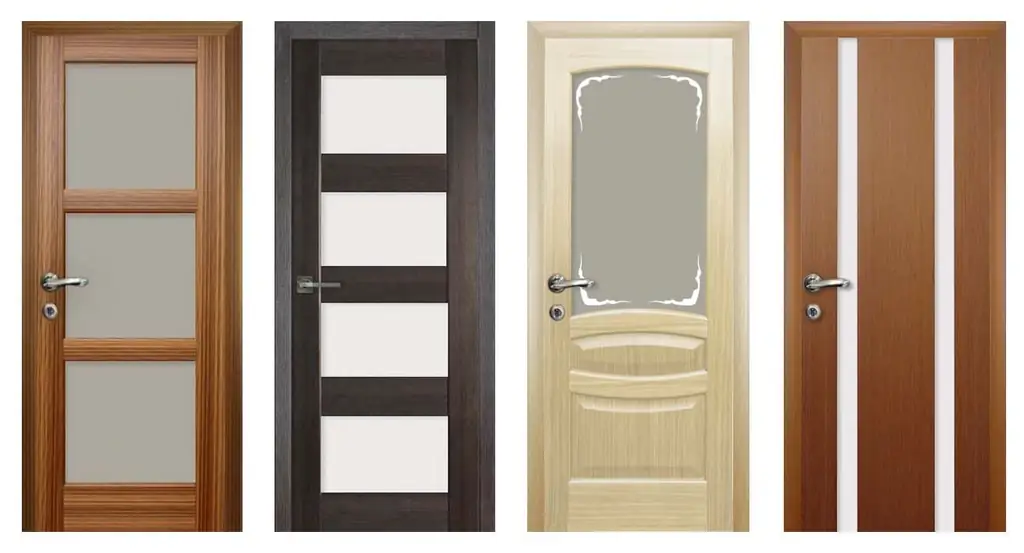
Classification of interior doors by material of manufacture and design. Recommendations for the selection and installation of fittings. Tips for repairing interior doors
Interior Laminated Doors And Their Varieties With A Description And Characteristics, Advantages And Disadvantages, As Well As Use And Compatibility In The Interior
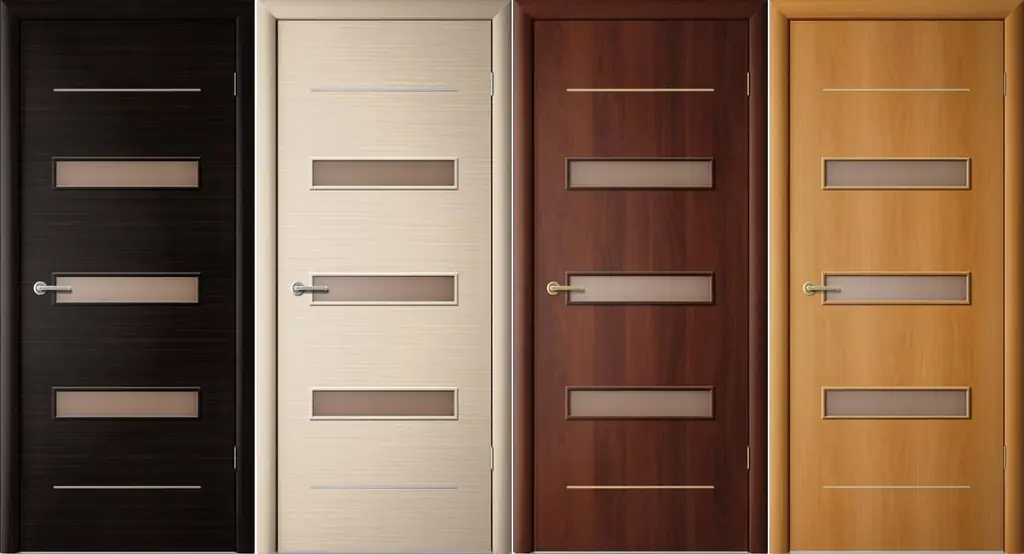
What are laminated doors: varieties and their characteristics. How to choose and install doors. Tips for the operation and repair of laminated doors
MDF Doors: Entrance And Interior Doors, Their Varieties With A Description And Characteristics, Advantages And Disadvantages, As Well As Installation And Operation Features
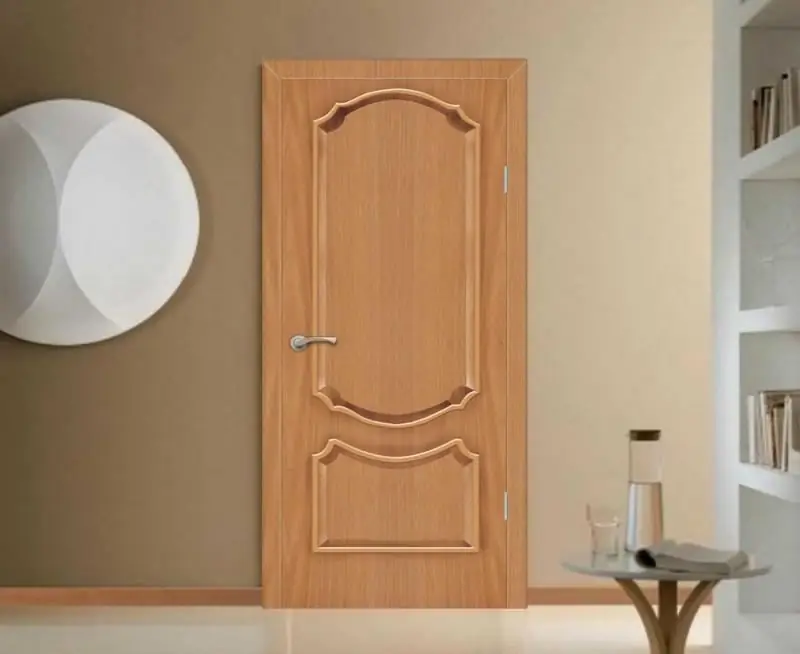
Doors from MDF: features, characteristics, varieties. Making and installing MDF doors with your own hands. Door restoration. Reviews, photos, videos
Metal-plastic Doors: Entrance, Interior And Their Varieties, Components, Installation And Operation Features

Types and features of metal-plastic doors. Manufacturing, installation, repair, service. Components for entrance and interior metal-plastic doors
Interior Doors Are Glass Or With Glass Inserts: Varieties, Device, Components, Installation And Operation Features
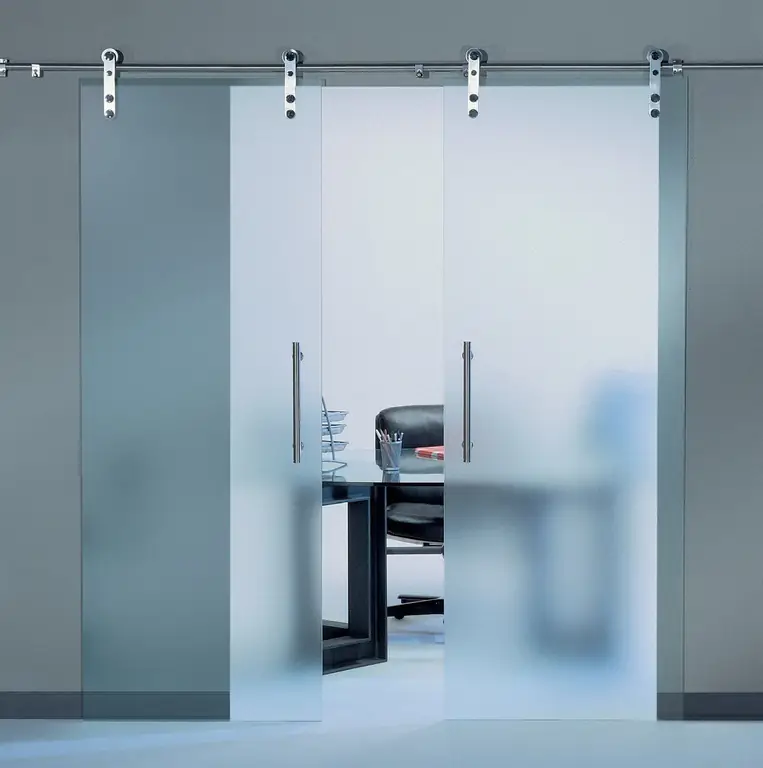
Arrangement of different types of doors made of glass and with glass inserts. Choice of accessories and door mounting technology. Breakdown and repair of interior doors
